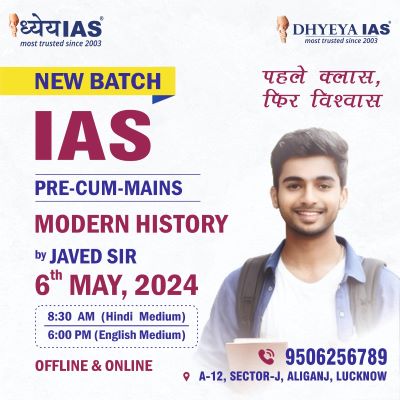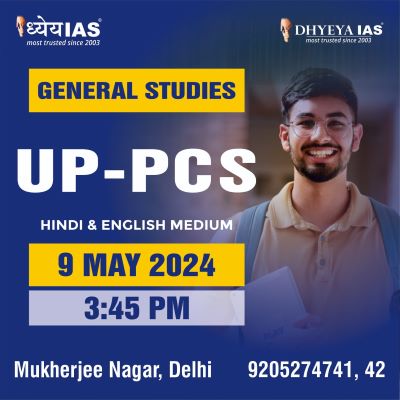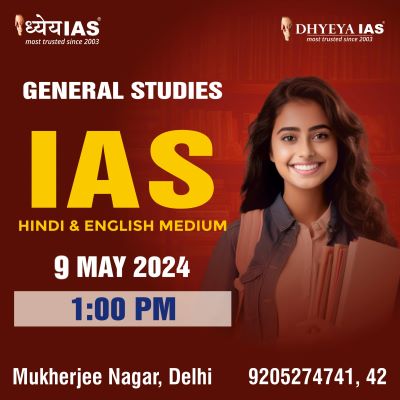Brain Booster for UPSC & State PCS Examination
Topic: Fifth State of Matter in Space

Why in News?
- Scientists have observed the fifth state of matter in space for the first time, offering unprecedented insight that could help solve some of the quantum universe's most intractable conundrums.
- NASA scientists on Earth have collaborated with astronauts on the International Space Station (ISS) to corral the first ever Bose-Einstein condensate (BEC) outside of Earth’s gravity.
- Among other things, the BEC lasted hundreds of times longer than the same substance on Earth’s surface.
About BECs
- There are four natural states of matter: Solids, liquids, gases and plasma.
- The fifth state is the man-made Bose-Einstein condensates.
- Bose-Einstein condensates (BECs) -- the existence of which was predicted by Albert Einstein and Indian mathematician SatyendraNath Bose almost a century ago -- are formed when atoms of certain elements are cooled to near absolute zero (0 Kelvin, minus 273.15 Celsius).
- BECs straddle the line between the macroscopic world governed by forces such as gravity and the microscopic plane, ruled by quantum mechanics.
- Scientists believe BECs contain vital clues to mysterious phenomena such as dark energy -- the unknown energy thought to be behind the Universe's accelerating expansion.
- But BECs are extremely fragile. The slightest interaction with the external world is enough to warm them past their condensation threshold.
- This makes them nearly impossible for scientists to study on Earth, where gravity interferes with the magnetic fields required to hold them in place for observation.
Process in Space
- To make a BEC, scientists must first corral and then supercool atoms. In the near-zero gravity in space, they can mix the ingredients in a much smaller catchment “trap.”
- On Earth’s surface, the atoms begin to repel each other and fly apart almost instantaneously.
- First, bosons - atoms that have an equal number of protons and electrons - are cooled to absolute zero using lasers to clamp them in place.The slower the atoms move around, the cooler they become. ( As they lose heat, a magnetic field is introduced to keep them from moving and each particle's wave expands. Cramming many bosons into a microscopic "trap" that causes their waves to overlap into a single matter wave -- a property known as quantum degeneracy.
- The second the magnetic trap is released in order for scientists to study the condensate, however, the atoms begin to repel each other, causing the cloud to fly apart and the BEC to becomes too dilute to detect.
- Unfortunately, even small perturbations from the outside world disrupt a BEC. That’s why we can only maintain them for a few milliseconds on Earth. Research conducted on the space station doesn’t have to contend with gravity, allowing them to isolate the condensate more effectively.
- Planetary orbit, specifically the condition of perpetual free-fall, offers to lift cold-atom studies beyond such terrestrial limitations.
Significance of BECs
- When a group of atoms is cooled to near absolute zero, the atoms begin to clump together, behaving as if they were one big "superatom."Unlike solids, liquids, gases and plasmas, BEC’s don’t form naturally.
- They serve as a valuable tool for quantum physicists because all the atoms in a BEC have the same quantum identity, so they collectively exhibit properties that are typically displayed only by individual atoms or subatomic particles. Thus, BEC’s make those microscopic characteristics visible at a macroscopic scale.
- A BEC also has many of the properties of a superfluid, or a fluid that flows without friction.
- BECs are also used to simulate conditions that might exist in black holes.
Will a Border Adjustment Tax be WTO Compatible?
- Countries that are members of Geneva-based global watchdog World Trade Organisation (WTO) have locked the upper limits of customs levies for product lines that they trade in. Any additional duty that gets imposed by WTO members are scoffed upon and in many instances, extra customs duties led to countries being dragged to international arbitration under WTO.
- India’s Commerce Ministry believes that the proposed extra customs duty through the BAT is compatible to global trade norms. Officials maintain that article II: 2(a) of GATT allows for import charge that is equal to the internal tax of the country with respect to a "Like Product" or an item from which the imported product is made. Legal opinion on the proposed levy has also been taken.
























